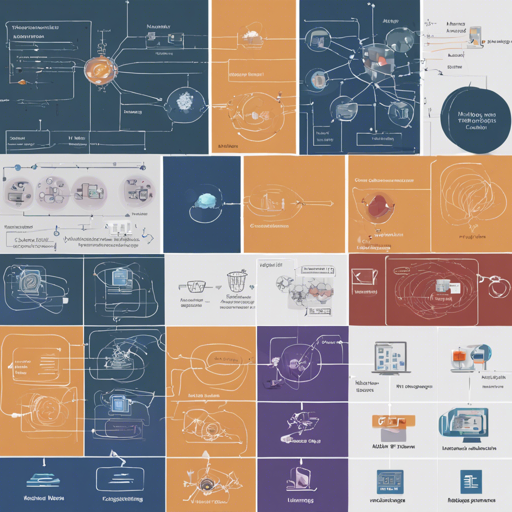In recent advancements in artificial intelligence and image classification technology, the EfficientNet model has been at the forefront, gaining popularity due to its accuracy and efficiency. This blog post is a user-friendly guide on how to utilize the EfficientNet image classification model tf_efficientnet_b4.ns_jft_in1k trained with Noisy Student semi-supervised learning. Let’s dive into how to implement this model step-by-step.
Model Overview
- Model Type: Image classification feature backbone
- Parameters (M): 19.3
- GMACs: 4.5
- Activations (M): 49.5
- Image Size: 380 x 380
For more detailed insights, you can refer to the exemplary research papers:
- EfficientNet: Rethinking Model Scaling for Convolutional Neural Networks
- Self-training with Noisy Student improves ImageNet classification
Implementation Steps
Image Classification
To perform image classification with this model, follow these steps:
python
from urllib.request import urlopen
from PIL import Image
import timm
# Load the image from the URL
img = Image.open(urlopen(
'https://huggingface.co/datasets/huggingface/documentation-images/resolve/main/beignet-task-guide.png'))
# Create the model
model = timm.create_model('tf_efficientnet_b4.ns_jft_in1k', pretrained=True)
model = model.eval()
# Get model specific transforms
data_config = timm.data.resolve_model_data_config(model)
transforms = timm.data.create_transform(**data_config, is_training=False)
# Get the model output
output = model(transforms(img).unsqueeze(0))
# Top 5 probabilities and class indices
top5_probabilities, top5_class_indices = torch.topk(output.softmax(dim=1) * 100, k=5)
Feature Map Extraction
To extract feature maps from the model, use the following approach:
python
from urllib.request import urlopen
from PIL import Image
import timm
img = Image.open(urlopen(
'https://huggingface.co/datasets/huggingface/documentation-images/resolve/main/beignet-task-guide.png'))
model = timm.create_model('tf_efficientnet_b4.ns_jft_in1k', pretrained=True, features_only=True)
model = model.eval()
data_config = timm.data.resolve_model_data_config(model)
transforms = timm.data.create_transform(**data_config, is_training=False)
output = model(transforms(img).unsqueeze(0))
for o in output:
print(o.shape)
Image Embeddings
To obtain embeddings from the images, reference the following code:
python
from urllib.request import urlopen
from PIL import Image
import timm
img = Image.open(urlopen(
'https://huggingface.co/datasets/huggingface/documentation-images/resolve/main/beignet-task-guide.png'))
model = timm.create_model('tf_efficientnet_b4.ns_jft_in1k', pretrained=True, num_classes=0)
model = model.eval()
data_config = timm.data.resolve_model_data_config(model)
transforms = timm.data.create_transform(**data_config, is_training=False)
output = model(transforms(img).unsqueeze(0))
# Alternatively, for unpooled output
output = model.forward_features(transforms(img).unsqueeze(0))
output = model.forward_head(output, pre_logits=True)
Understanding the Code: An Analogy
Think of the EfficientNet model as a master chef in a culinary school. The chef is trained to prepare various dishes (classifications) but needs a reliable recipe (code) to ensure the steps are perfectly executed. Just as a chef gathers ingredients (input images) and follows a transformative cooking process (data transformations) to create a delightful meal (output classification), the code you’ve written directs the model to process the input to generate precise classifications. The chef’s kitchen filled with tools (layers of the model) allows the chef to create complexity and flavor (the intricate outputs) to satisfy the diners (end users).
Troubleshooting
If you encounter any issues while implementing this model, consider the following troubleshooting steps:
- Ensure you have all required libraries installed: timm, torch, and PIL. You can install them via pip if needed.
- Verify the image URL and make sure that it is accessible.
- If you receive unexpected output shapes or errors, double-check the data transformations are correctly implemented.
- For further assistance and collaboration on AI development projects, stay connected with fxis.ai.
At fxis.ai, we believe that such advancements are crucial for the future of AI, as they enable more comprehensive and effective solutions. Our team is continually exploring new methodologies to push the envelope in artificial intelligence, ensuring that our clients benefit from the latest technological innovations.
Conclusion
The EfficientNet model offers a robust platform for image classification and can be effectively integrated into various applications. By following this guide, you will harness the power of deep learning to derive meaningful insights from images.

